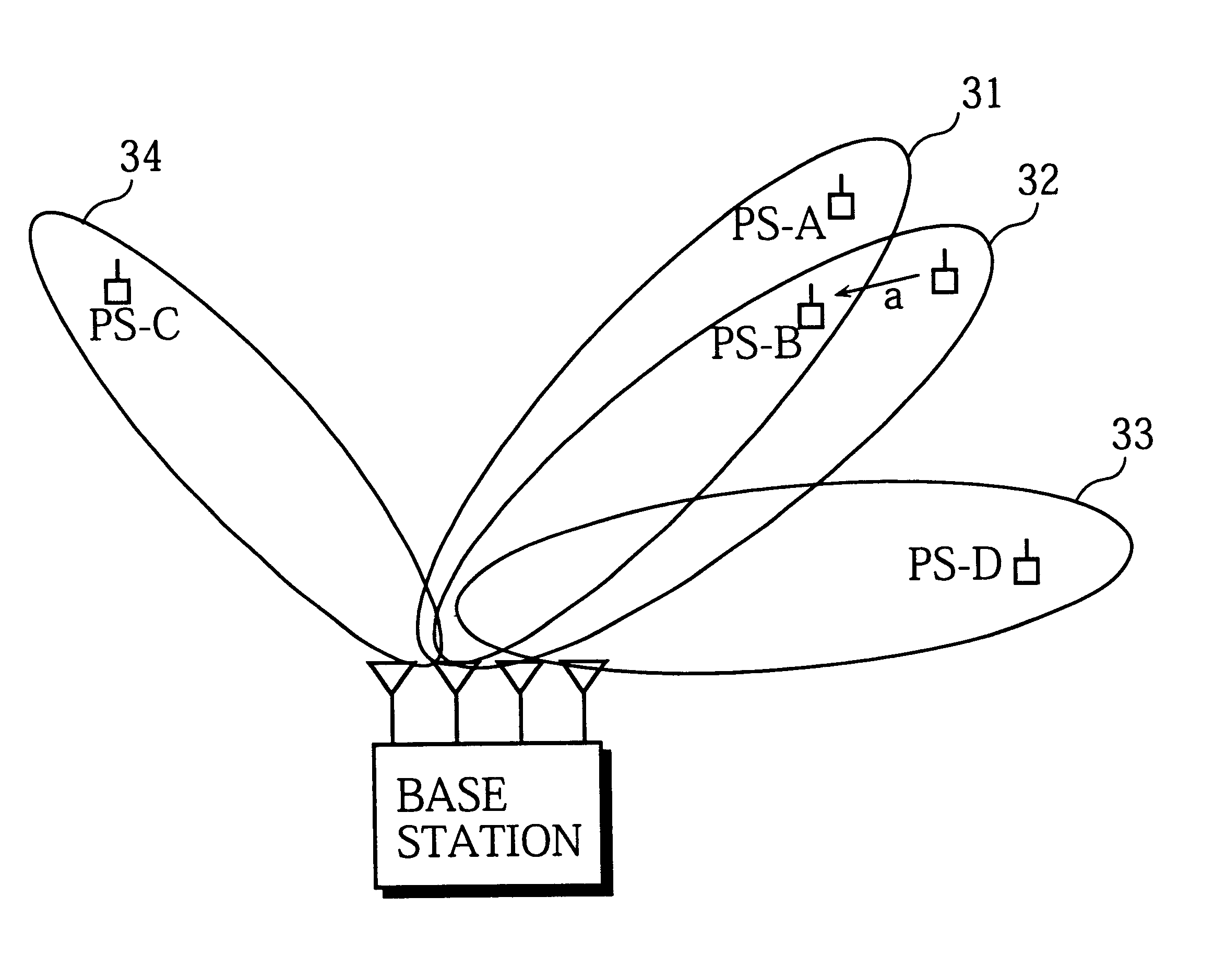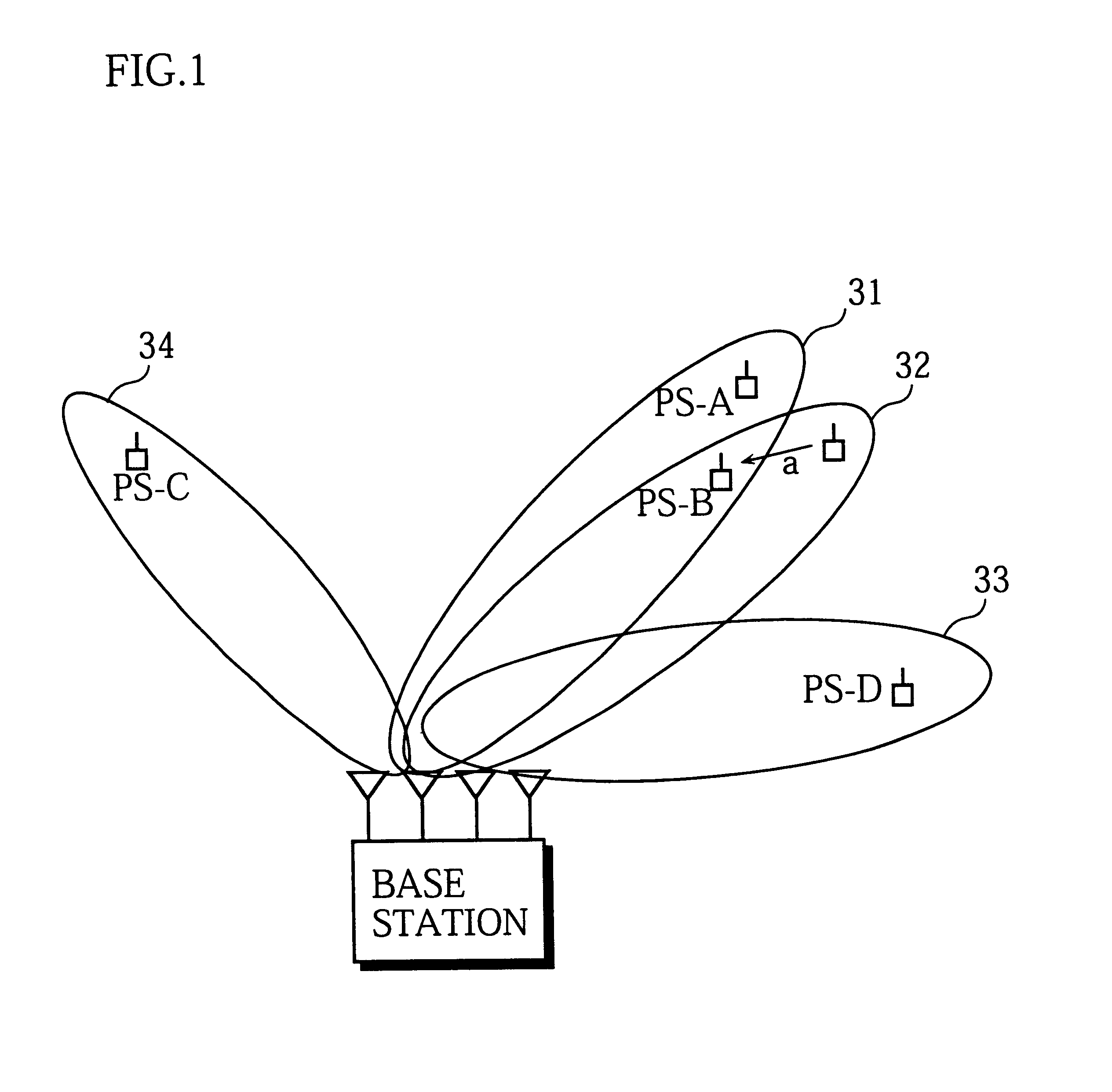Wireless base station that staggers the transmission of symbols to spatially multiplexed mobile stations by a predetermined time that is shorter than the symbol period
a mobile station and symbol technology, applied in multiplex communication, polarisation/directional diversity, synchronisation arrangement, etc., can solve the problems of annoying users, each mobile station can only descramble signals, and cannot perform this technique perfectly, etc., to achieve the effect of performing this technique, and performing it perfectly, it is difficult to achieve the effect of success
- Summary
- Abstract
- Description
- Claims
- Application Information
AI Technical Summary
Benefits of technology
Problems solved by technology
Method used
Image
Examples
first embodiment
Overall Construction of the Wireless Base Station
FIG. 2 is a block diagram showing the construction of the main components of a wireless base station that is an embodiment of the present invention.
As shown in FIG. 2, the present wireless base station is composed of radio units 11, 21, 31, and 41, antennas 10, 20, 30, and 40, a modem unit 60, a control unit 80, a baseband unit 70, and signal processing unit 50.
Radio Unit 11
The radio unit 11 is composed of a transmission unit 12 and a reception unit 13. The transmission unit 12 modulates the baseband signal (symbol data) inputted from the signal processing unit 50 to produce an intermediate frequency signal (hereafter, "IF signal"). The radio unit 11 then modulates the IF signal to produce a high-frequency signal (hereafter, "RF signal") which it amplifies to the transmission output level and then outputs to the antenna 10.
The reception unit 13 modulates a received signal inputted from the antenna 10 to produce an IF signal, and then ...
modification 1
While the above embodiment describes an adjustment to the transmission timing of signals for two mobile stations whose signals are multiplexed together using path division, this is not a limitation for the present invention. As one example, suppose that multiplexing is being performed using path division for the signals of three mobile stations (PS-1, PS-2, PS-3). In this case, the transmission of symbol data for the mobile stations PS-2 and PS-3 can be respectively delayed by 0.33 and 0.66 symbol periods relative to the transmission of symbol data for the mobile station PS-1. As a result, mobile stations can be prevented from mistakenly demodulating symbol data that is transmitted to other mobile stations.
In the same way, when N signals are being multiplexed using path division, the transmission timing of symbols for different mobile stations can be set at (K / N).multidot.T from a predetermined point in the timeslot, where K=0, 1, 2, . . . , N-1 and T is the symbol period.
The delayi...
second modification
The above embodiment was described as adjusting the transmission timing of symbols when two mobile stations with spatially multiplexed signals are positioned in similar directions relative to a wireless base station. However, the transmission timing of spatially multiplexed signals may always be adjusted, regardless of the positioning of the mobile stations.
When a wireless base station has a plurality of antennas and a large number of signals can be spatially multiplexed, the transmission timing of symbols to each mobile station will be similar. This makes it easier for mobile stations to demodulate signals that are intended for other mobile stations. In this case, the following method may be used. The wireless base station may first judge whether the number of signals to be multiplexed using path division is equal to or above a predetermined number. When this is not the case, the wireless base station may adjust the transmission timing for all mobile stations currently in communica...
PUM
 Login to View More
Login to View More Abstract
Description
Claims
Application Information
 Login to View More
Login to View More - R&D
- Intellectual Property
- Life Sciences
- Materials
- Tech Scout
- Unparalleled Data Quality
- Higher Quality Content
- 60% Fewer Hallucinations
Browse by: Latest US Patents, China's latest patents, Technical Efficacy Thesaurus, Application Domain, Technology Topic, Popular Technical Reports.
© 2025 PatSnap. All rights reserved.Legal|Privacy policy|Modern Slavery Act Transparency Statement|Sitemap|About US| Contact US: help@patsnap.com



